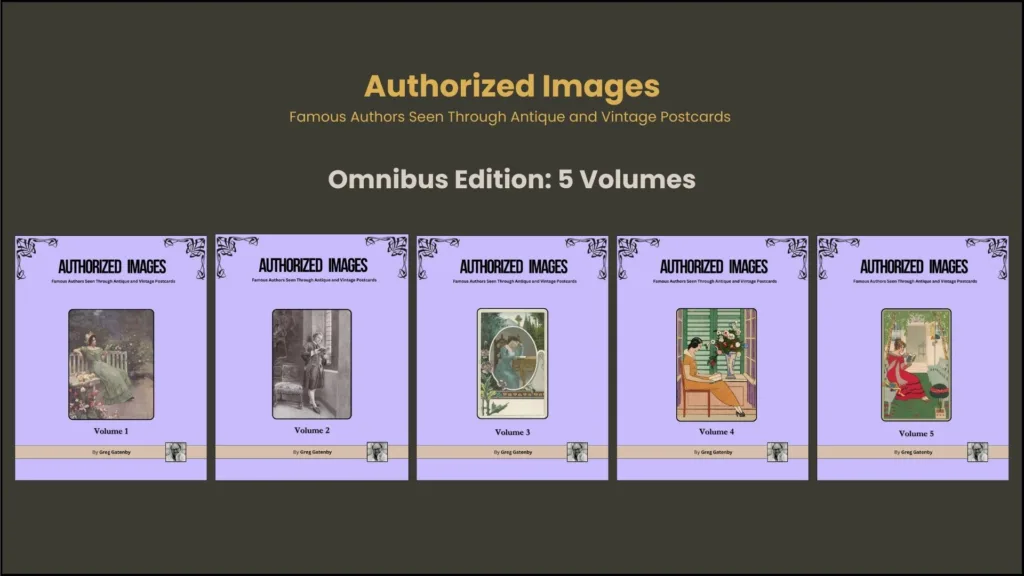Books and Vintage Merchandise Store

The volumes comprising Authorized Images are the result of 25 years of intensive research, and the discovery of thousands of antique postcards portraying (or related to) renowned authors of fiction, poetry, or drama.
These postcards, most of which have never been published previously in any book or scholarly journal, are described in detail, with dates, country or origin, circumstances concerning the image, and, whenever possible, with the identity and dates of the visual artist who created the image.
The descriptions include biographical facts to help explain pictures and their context. For example, if a postcard displays an image of a house, the text explains the connections between the building and the author under discussion. Thus a residence may be where the author was born, or died, or dwelt, and worked. The prose accompanying the postcards is written in accessible English free of jargon.
The huge number of literary postcards reproduced in colour, supported by substantial captions mean the manuscript is so large and comprehensive that it will be available only online—either in an Omnibus Edition (of five volumes which treats all 70 writers), or in a Spotlight Edition which focuses on just one or a tiny group of authors with the same content as the Omnibus Edition.
The 5 Volumes of the Omnibus Edition examine how 70 authors (from Homer to Hemingway) were celebrated by postcard publishers in the last years of the 19th century and the early decades of the 20th. The Omnibus Edition totals almost 350,000 words plus nearly 4731 pictures, reflecting my years of research into the connections between so many acclaimed authors and how they were beheld and revered by a wide public.


Award-winning author Greg Gatenby is writing a compelling and comprehensive account of the social, political, diplomatic, and military events which, in combination, over a hundred years led to World War One.

Unlike most histories of that global catastrophe, Gatenby recounts (in congenial prose pitched to non-specialists) how the origins of the Great War go back 1,900 years to the huge battles between the Caesars of the Roman Empire and the Teutonic peoples of what was then called Germania. From that starting point he concentrates more fully on the personalities and events following the defeat of Napoleon at the Battle of Waterloo—and carries on to 1919 and the end of WWI and its immediately effects internationally.